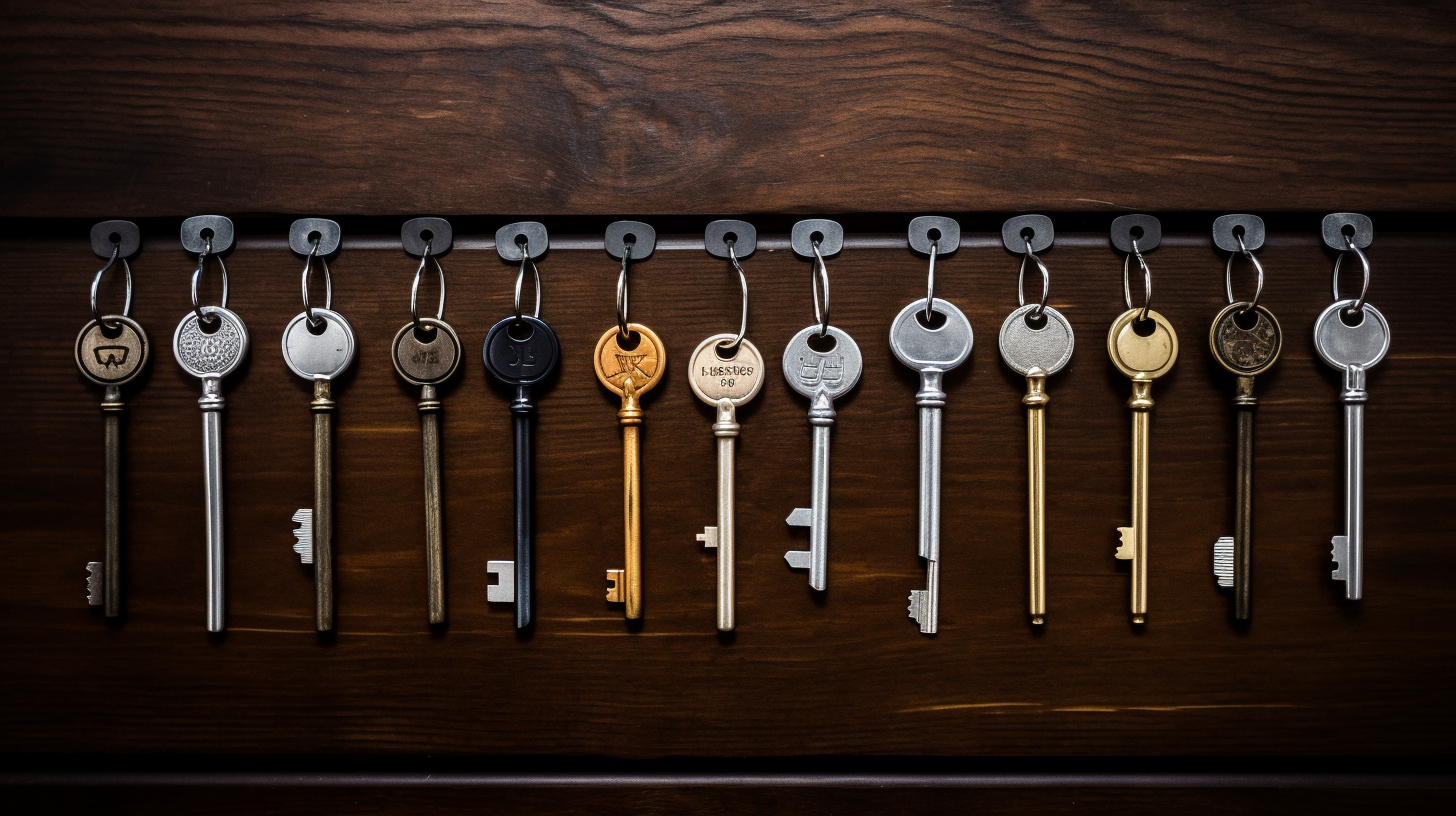At the core of blockchain wallet security lies the management of cryptographic keys. Cryptographic keys consist of a public key and a private key. The public key is openly shared with others to receive funds, while the private key is kept secret and used to sign transactions to authorize the transfer of funds. Proper key management is crucial to ensure the integrity and security of a blockchain wallet.
Want to learn more about blockchain wallets? Check out our comprehensive guide here.
Public and Private Keys
Public keys serve as an address to receive funds, similar to a bank account number. They are derived from the corresponding private key using mathematical algorithms. Public keys are safe to share with others, as they only allow users to view the balance and transaction history associated with the wallet address.
On the other hand, private keys are the secret codes that grant access to the funds stored in a blockchain wallet. Private keys should NEVER be shared with anyone, as possession of the private key allows full control over the associated funds. Loss or compromise of a private key can result in irreversible loss of funds.
Key Generation and Storage
The process of generating a secure private key is crucial in ensuring the security of a blockchain wallet. Wallet software employs random number generators and cryptographic algorithms to generate unique private keys with a sufficiently high level of entropy. The use of strong encryption techniques ensures that private keys cannot be easily guessed or brute-forced.
Proper storage of private keys is equally important. Hardware wallets, such as the Ledger Nano S and Trezor Wallet, store private keys in secure elements that are resistant to physical and remote attacks. Software wallets often encrypt private keys and store them in secure storage locations on the user’s device. “Paper wallets” are physical copies of private keys that should be kept in secure and offline locations to prevent unauthorized access.
Key Encryption and Decryption of Private Keys
To protect private keys from unauthorized access, many blockchain wallets encrypt them using strong cryptographic algorithms. Encryption ensures that even if an attacker gains access to the wallet’s storage, the private keys remain unreadable. Encryption algorithms, such as AES (Advanced Encryption Standard), are commonly used to secure private keys.
When a user initiates a transaction or wants to access their funds, the wallet software decrypts the private key using a decryption mechanism. This process allows the wallet to sign the transaction and prove ownership of the funds without exposing the actual private key. The decrypted private key remains in memory only for the duration of the transaction and is promptly cleared once the transaction is completed.
Two-Factor Authentication
To further enhance the security of blockchain wallets, many wallet providers offer two-factor authentication (2FA) as an additional layer of protection. 2FA requires users to provide a second form of verification, typically in the form of a unique code generated by a mobile app or received via SMS, in addition to their username and password.
By implementing 2FA, blockchain wallets add an extra barrier against unauthorized access. Even if an attacker manages to obtain the username and password, they would still need the additional verification code to gain access to the wallet. This additional layer of security significantly reduces the risk of unauthorized access, especially in cases where passwords may have been compromised through phishing attacks or data breaches.
Multi-Signature Transactions
Multi-signature (multi-sig) transactions are another powerful security feature available in some blockchain wallets. Multi-sig transactions require the approval of multiple parties, each possessing a separate private key, to authorize a transaction. This added layer of verification ensures that no single individual can unilaterally control or spend the funds associated with the wallet.
For example, a multi-sig wallet might require two out of three private keys to sign a transaction. This setup could involve the user’s private key, a trusted friend or family member’s private key, and a third-party service provider’s private key. By requiring multiple parties to authorize transactions, multi-sig wallets provide enhanced security and protection against unauthorized access or fraudulent activities.
Cold Storage and Offline Wallets
Cold storage refers to the practice of keeping private keys and wallet data offline, away from any internet-connected devices. Cold storage significantly reduces the risk of online attacks, as hackers cannot access private keys if they are not connected to the internet. Hardware wallets and paper wallets are common forms of cold storage.
Hardware wallets, such as the Ledger and Trezor Wallet, store private keys in secure hardware devices that are not directly exposed to the internet. Users can sign transactions offline and then transfer the signed transaction to an online device for broadcasting to the network. This offline-signing process ensures that the private keys never come into contact with potentially compromised online systems.
Similarly, paper wallets, which consist of printed copies of private and public keys, provide an offline storage solution. Paper wallets are generated offline and are immune to online attacks. However, they require careful handling and storage in secure and physically protected locations.
Backup and Recovery Procedures
Backup and recovery procedures are crucial to protect against the loss or damage of blockchain wallets. Wallet software often provides users with recovery phrases or seed phrases—sequences of words that serve as a backup of the private keys. Users should write down these phrases and store them securely in offline locations, such as a safe or a safety deposit box.
In the event of a device failure or loss, users can restore their blockchain wallet by inputting the recovery phrase into a new device or wallet software. This process regenerates the private keys and allows users to regain access to their funds. It is essential to follow the backup and recovery instructions provided by the wallet software to ensure the safe retrieval of wallet data.
Key Management is Key
In conclusion, proper key management is essential for ensuring the security and integrity of blockchain wallets. Cryptographic keys, consisting of public and private keys, play a crucial role in wallet security. Public keys are shared openly to receive funds, while private keys must be kept secret to authorize transactions. Key generation, encryption, and storage methods are vital in safeguarding private keys. Additional security measures, such as two-factor authentication and multi-signature transactions, enhance wallet security. Cold storage, backup, and recovery procedures are also important for protecting against loss or damage. By implementing these best practices, users can enhance the security of their blockchain wallets and safeguard their funds.



